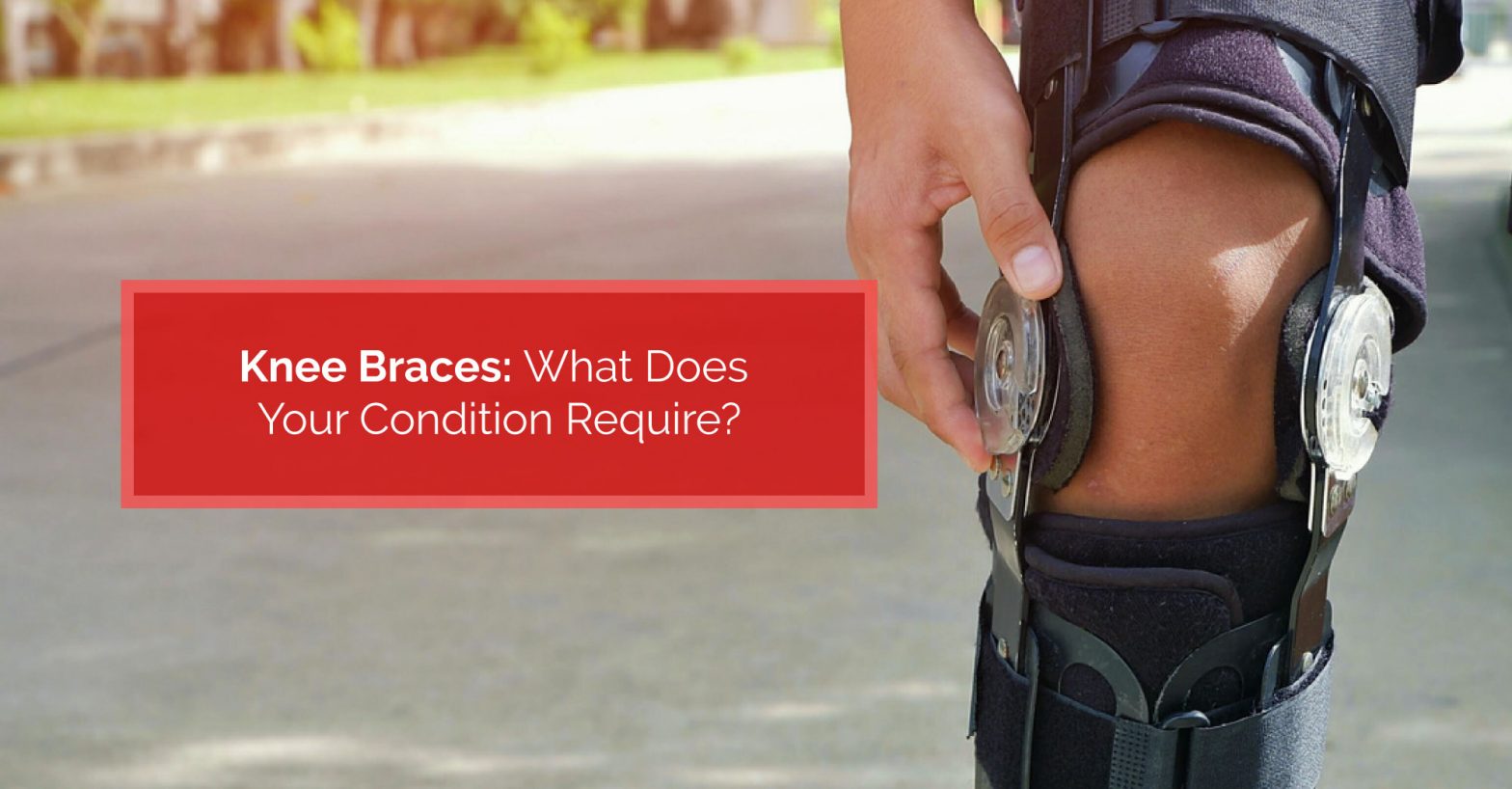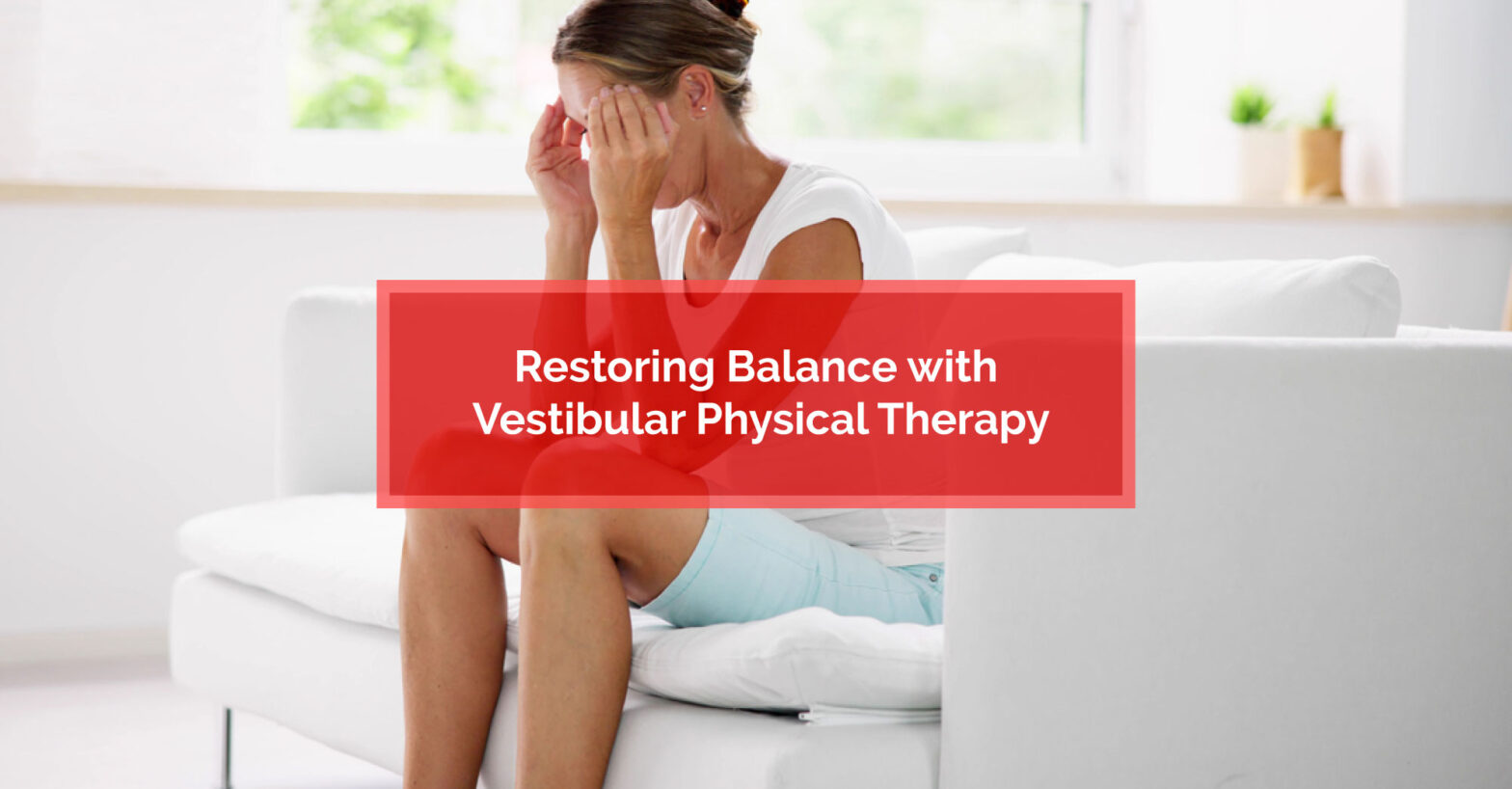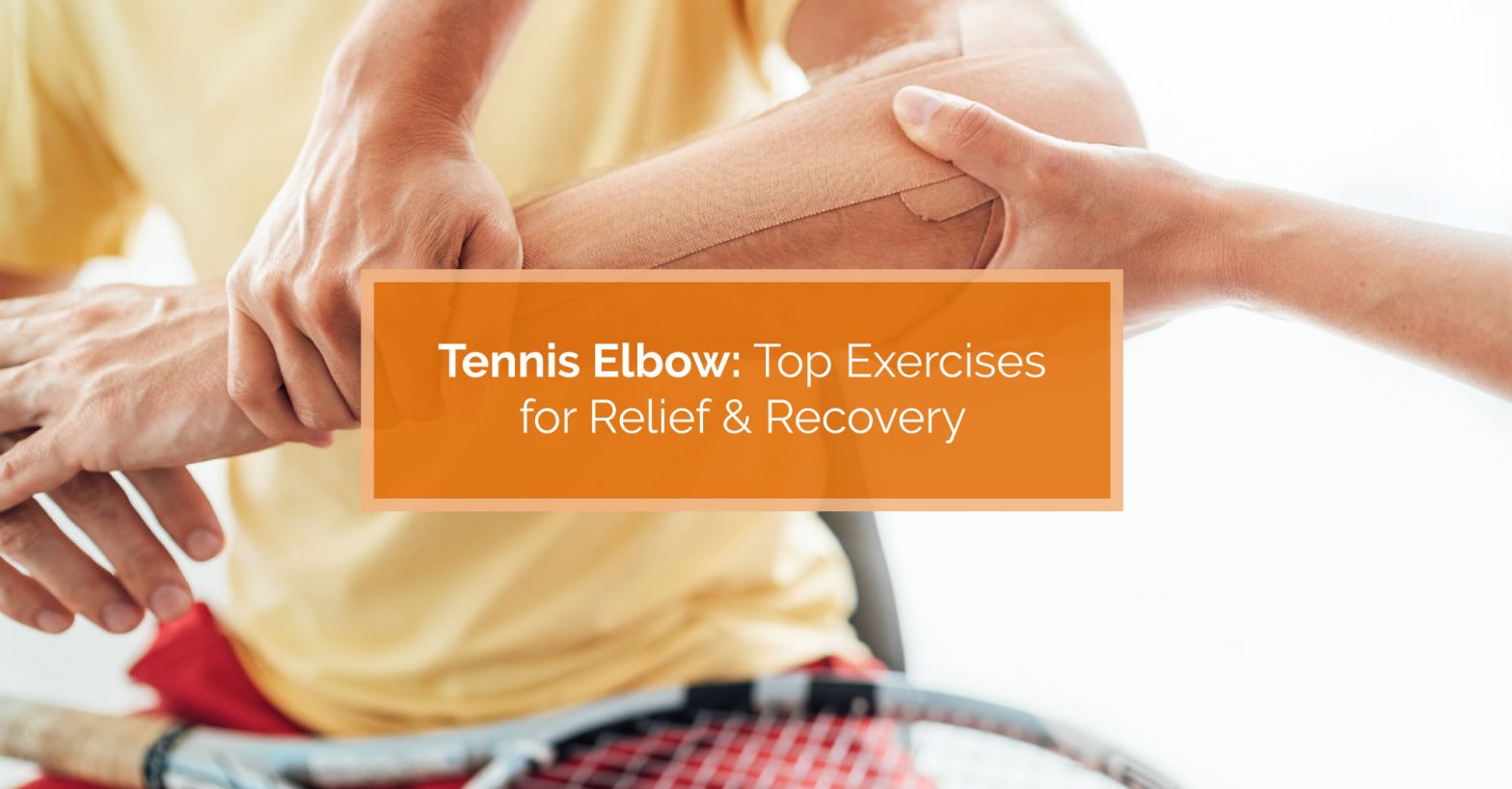Posted by Dr. Scott Wilson | 15-Jun-2023
Knee braces are an effective solution for helping to alleviate pain, reduce swelling, improve range of motion, provide support during recovery and to prevent injury or re-injury. But with so many types of braces available, how do you know which one is right one for your specific needs? In this post, we’ll take a look at the types of knee injuries and conditions that require a knee brace, the different types of braces that are available, and the various factors you should consider. With this information, you can make a more informed choice about which knee brace is right for you based on your particular injury or condition and support requirements.
Injuries & Conditions Requiring Knee Braces
Knee braces are beneficial for several types of knee injuries and conditions including ligament injuries, meniscus tears, arthritis, and patellar conditions. They can also be beneficial for post-surgery rehabilitation and sport injury prevention. Here’s a bit of a quick overview of each of these injuries and conditions, including their causes and symptoms:
- Ligament Injuries: Ligament are strong bands of connective tissue that connect bones and provide stability to the knee joint. They play a crucial role in maintaining the structural integrity and proper functioning of the knee by restricting excessive movement and providing support. Ligament injuries can range in severity from mild sprains, where the ligament is stretched or partially torn, to complete tears. Symptoms of a ligament injury may include pain, swelling, instability, difficulty bearing weight, and limited range of motion.
- Meniscus Tears: A meniscus is a C-shaped piece of cartilage located within the knee joint between the thighbone (femur) and shinbone (tibia). Each knee has two menisci: the medial meniscus on the inner side of the knee, and the lateral meniscus on the outer side. Tears often occur as a result of sudden movements, direct trauma, or degenerative changes in the meniscus over time. Symptoms include pain, swelling and stiffness, difficulty fully extending or bending the knee, a catching or locking sensation, and sense of instability.
- Osteoarthritis: Osteoarthritis is the most common form of arthritis and is often referred to as “wear and tear” arthritis. It occurs when the protective cartilage that cushions the ends of the bones within a joint gradually breaks down over time. Contributing factors include genetics, aging, obesity, repetitive stress on the joint, and previous joint injuries. Symptoms include pain and stiffness that worsens with activity and improves with rest, swelling and tenderness, reduced flexibility and range of motion, a grating or crackling sensation during movement, and the formation of bone spurs (bony outgrowths) around the joint.
- Rheumatoid Arthritis: Rheumatoid arthritis is an autoimmune disease where the body’s immune system mistakenly attacks the lining of the joints, leading to chronic inflammation. While the exact cause of rheumatoid arthritis is unknown, it’s believed to involve a combination of genetic and environmental factors. Symptoms include persistent pain, swelling, and warmth, as well as stiffness and limited mobility, especially in the mornings or after periods of inactivity. It can also lead to deformities, such as misalignment or subluxation of the knees.
- Patellar Tracking Disorder: Patellar tracking disorder, is a condition where the kneecap (patella) moves abnormally or is misaligned in relation to the groove at the end of the thighbone (femur). It’s often caused by muscle imbalances, structural abnormalities, overuse or trauma, and an excessively loose or hypermobile joint. Symptoms tend to include pain in the front of the knee, a feeling that the kneecap is catching during movement, swelling and tenderness around the kneecap, and stiffness or a limited range of motion.
- Patellar Tendonitis: Patellar tendonitis is characterized by inflammation and irritation of the patellar tendon, which connects the kneecap (patella) to the shinbone (tibia). It’s a common overuse or repetitive stress injury leading to small tears and degeneration of the tendon and is often associated with activities that involve repetitive jumping or running. Patellar tendonitis can also be caused by poor biomechanics or technique and muscle imbalances. Symptoms include pain and tenderness at the front of the knee that worsens with activity, stiffness and discomfort in the knee, and swelling and warmth around the patellar tendon.
- Post-Surgery Rehabilitation: After knee surgery, a knee brace is often needed to provide stability, support, and protection to the healing knee joint. The brace immobilizes the knee, preventing excessive movement and strain on repaired tissues. The brace also helps maintain proper alignment in surgeries involving bone realignment or joint correction and facilitates gradual rehabilitation by controlling the range of motion. Additionally, knee braces can assist with pain management through compression or padding.
- Sports Injury Prevention: Many athletes wear knee braces as a preventive measure to minimize the risk of knee injuries while active. Braces provide stability and support to the knee joint, limiting excessive movements that can lead to ligament sprains or tears. They can also absorb impact and provide compression, reducing stress on the knee and potentially preventing certain injuries.
Available Knee Braces
Given the variety of injuries and conditions that require a knee brace for support, it’s not surprising that there’s also a variety of braces to choose from. Each is designed to address specific conditions or provide different and varying levels of support. Here’s an overview of the some common types of knee braces currently available:
- Knee Sleeves: Knee sleeves are elastic, flexible sleeves that provide compression and warmth to the knee joint. They’re commonly used for mild knee pain, to provide general support, including as a preventive measure during sports activities. Their composition, construction and suitability tends to vary according to materials, thicknesses, and sizes.
- Basic Knee Braces or Supports: These braces are typically made of neoprene or similar materials and provide basic support and stabilization to the knee. They often have straps or adjustable closures for a customizable fit. These knee supports are commonly used for mild to moderate knee instability, arthritis, or as a precaution during physical activities.
- Hinged Knee Braces: As the name suggests, hinged knee braces have hinges on the sides of the knee joint. These hinges allow controlled movement while providing stability and preventing excessive side-to-side or rotational motions. They’re commonly used for ligament injuries, such as ACL or MCL tears, and are often recommended during post-surgery rehabilitation.
- Patellar Stabilizing Braces: These braces focus on stabilizing the patella (kneecap) and the patellar tendon. They usually have a strap or a support system that helps keep the patella aligned during movements. Patellar stabilizing braces are commonly used for conditions like patellar tracking disorder, patellar tendonitis, or for support during activities involving frequent jumping or running.
- Unloader or Offloading Braces: Unloader braces are designed to shift the load away from the affected part of the knee joint, commonly used for people with knee osteoarthritis. They help reduce pain and provide support by redistributing the forces exerted on the knee joint during movement.
- Postoperative or Rehabilitative Braces: These braces are specifically designed for postoperative or post-injury use during the rehabilitation process. They provide stability, protect surgical repairs, and restrict certain movements to facilitate proper healing.
Choosing the Right Knee Brace
When it comes to choosing the right knee brace for your specific injury or condition, there are a number of factors you should consider. Here’s a quick overview to help you with making the right choice:
- Type of Injury or Condition: The critical first step is Identifying the specific injury or condition that affecting your knee and driving the need. As you can see from the descriptions of the braces above, different knee braces are designed to target specific issues like ligament or meniscus injuries, arthritis, or patellar instability. Understanding your condition will define the type of support, and therefore the type of brace, you need.
- Level of Support: In addition to the type of support you need, it’s also important to determine the level of support you need. Some injuries may necessitate maximum stability and support, while others may only require mild to moderate support. This will help you to choose a brace with the most appropriate type of structural features, such as hinges or straps.
- Fit and Size: It’s important to choose a knee brace that fits properly. A well-fitted brace should feel snug but not overly tight or restrictive. Improperly fitting braces may not provide the intended support or may cause discomfort. Measure the circumference of your thigh and calf to determine the correct size according to the manufacturer’s guidelines. Given the importance of fit and size and each individual’s unique proportions, a custom knee brace may often be the best option.
- Comfort and Breathability: Comfort and breathability are important considerations, particularly if the brace is being worn for extended periods of time. Moisture-wicking and breathable fabrics are important for helping to prevent excessive heat and perspiration build-up during activities. Look for braces made from materials that allow airflow and that feel comfortable against your skin.
- Activity Level and Range of Motion: Your activity level and required range of motion are also important considerations. Different knee braces offer varying degrees of flexibility and allow varying degrees of movement. For activities that involve a wide range of motion, such as sports, a brace that allows controlled movement might be more suitable. However, for conditions requiring limited motion, a brace with stricter immobilization may be necessary.
- Quality and Durability: Quality and durability of the knee brace also impacts its suitability. To ensure the most appropriate level of quality and durability, look for well-known brands that have a reputation for producing reliable, high-quality, and long-lasting products. Reading reviews from other users can also provide insights into the durability and performance of different knee braces.
Conclusion
Knee braces serve various purposes including reducing pain and swelling, supporting joints, improving range of motion, supporting post-surgery rehabilitation, and preventing injury and re-injury. With the variety of knee braces available today, choosing the right one for your injury or condition can be overwhelming. However, by considering the various factors identified above including the type of injury or condition, the level and type of support you need and the importance of fit, you’ll be in a better position to get the right brace for your condition.
If you’re considering intermittent fasting for weight loss or have any questions, contact us today and let us show you why, at Physiomed, Healthier Starts Here.
FAQs on Knee Braces
Q1. Do knee braces really help?
Yes, knee braces can help by providing support, stability, and protection to the knee joint, but their effectiveness varies depending on the specific injury and condition, and the suitability fit and quality of the brace selected. It’s best to consult with a healthcare provider and/or a bracing expert before making your selection.
Q2. How long is it safe to wear a knee brace?
Typically, wearing a knee brace for up to eight hours per day is safe. However, it does depend on the quality of the nature of your injury or condition and on the quality of the brace. Wearing a brace for extended periods may cause skin irritation or muscle weakness, so take breaks and remove the brace if discomfort occurs. it’s best to consult with your healthcare professional for specific guidelines.
Q3. When should you use a knee brace?
Knee braces are useful for injury prevention and support during physical activity. If you have a medical condition, knee pain or instability, a knee brace may be helpful. Consult with a healthcare professional to determine if this is the right option for you.






